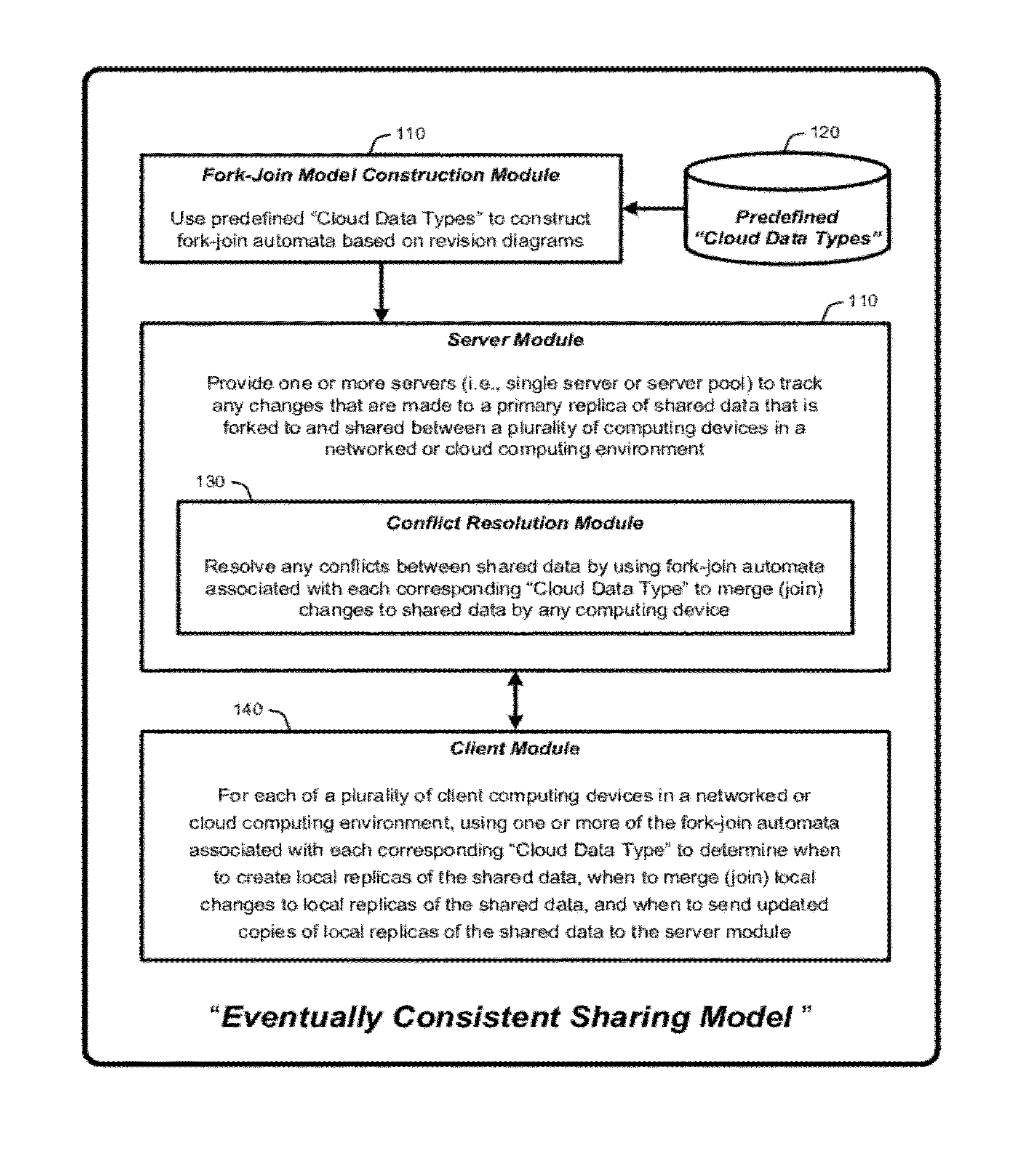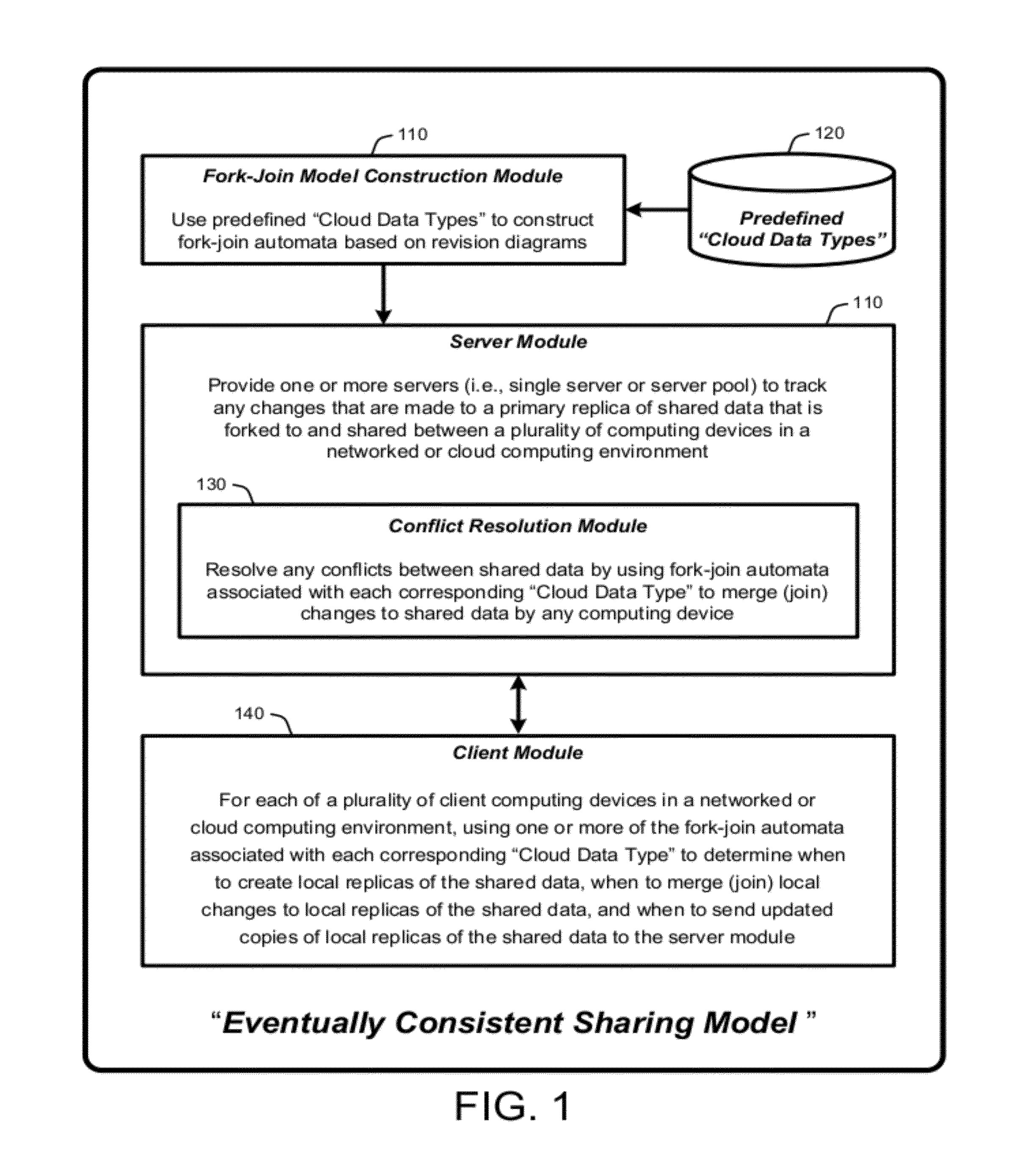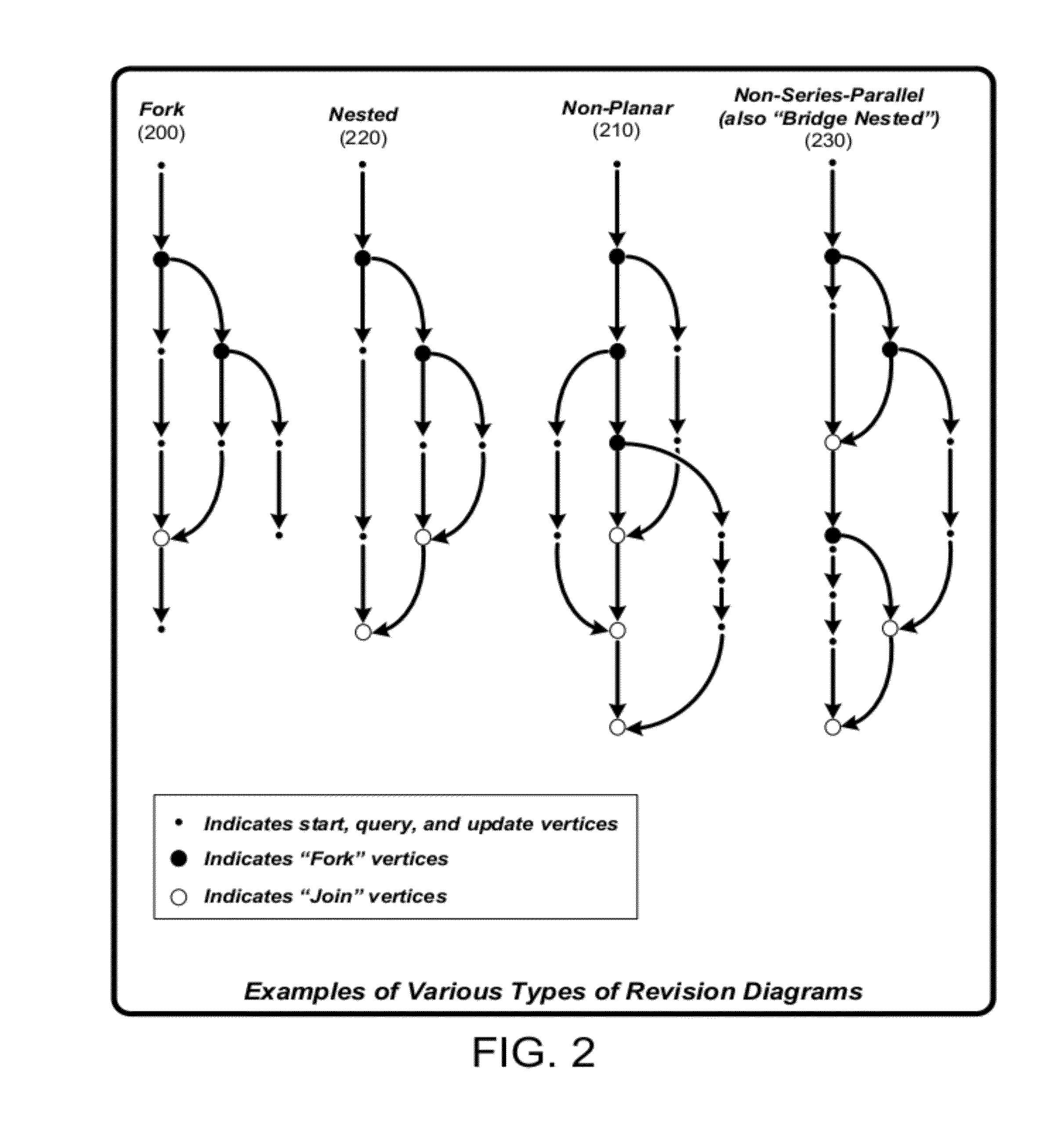Eventually consistent storage and transactions
a technology of event-based storage and transaction, applied in data processing applications, multi-programming arrangements, instruments, etc., can solve problems such as easy breakage of data invariants, requiring developers to be more careful, and weakening traditional consistency guarantees (such as linearizability). , to achieve the effect of automatic conflict resolution
- Summary
- Abstract
- Description
- Claims
- Application Information
AI Technical Summary
Benefits of technology
Problems solved by technology
Method used
Image
Examples
case b
[0271]Forking and joining of revisions on the server is straightforward. The implementation of yield on each device is guaranteed to always execute quickly and never block (regardless of message speed or lost messages). This is achieved by distinguishing between three cases (referred to as Cases A, B, and C):[0272]Case A. If a server response is not currently expected, the device (i.e., the client) sends the current revision to the server, and forks a new revision for continued local use;[0273] If a revision from the server has arrived at a device, the current local revision is merged (i.e., joined) into the received revision; and[0274]Case C. If a revision is expected from the server but it is not currently available or present, the device does not merge or fork revisions.
[0275]The revision diagrams illustrated in FIG. 7 and FIG. 8 represent possible executions of the aforementioned grocery list example for the case of two devices and one server, where Device 1 and Device 2 are sha...
PUM
 Login to View More
Login to View More Abstract
Description
Claims
Application Information
 Login to View More
Login to View More - R&D
- Intellectual Property
- Life Sciences
- Materials
- Tech Scout
- Unparalleled Data Quality
- Higher Quality Content
- 60% Fewer Hallucinations
Browse by: Latest US Patents, China's latest patents, Technical Efficacy Thesaurus, Application Domain, Technology Topic, Popular Technical Reports.
© 2025 PatSnap. All rights reserved.Legal|Privacy policy|Modern Slavery Act Transparency Statement|Sitemap|About US| Contact US: help@patsnap.com



